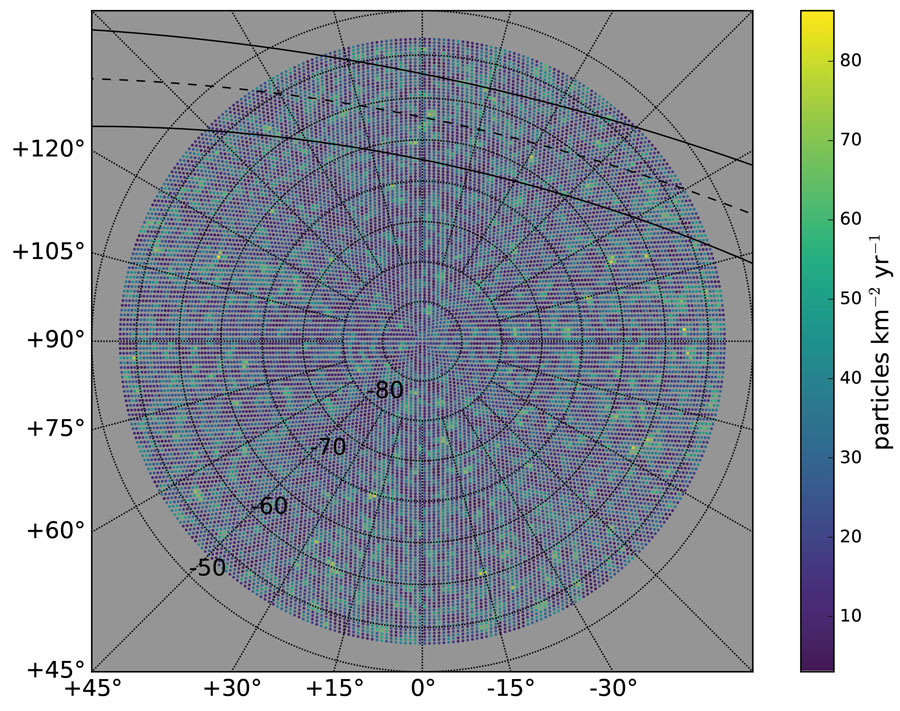Cosmic-ray studies with IceCube have provided the first measurement of the anisotropy in the Southern Hemisphere. We have also measured the cosmic-ray flux, searching for signatures that can tell us about the transition from galactic to extragalactic sources and the chemical composition of cosmic rays.
And now it’s the neutron’s turn to reveal what it can tell us about galactic cosmic ray sources. The IceCube Collaboration presents results from a search for sources of high-energy neutrons using four years of data from IceTop, the surface detector array. Researchers have not found any evidence for astrophysical neutrons, but the results have allowed the collaboration to set new limits that constrain the possible galactic neutron sources. These results have just been submitted to the Astrophysical Journal.

Neutrons cannot be accelerated by shock waves like cosmic-ray protons and other charged nuclei, but they can be produced in the interactions of cosmic rays with matter in and nearby the sources. They would then propagate in a straight line until they decay, travelling distances of about 10 pc per every PeV of energy.
These high-energy neutrons produce a shower of particles when they reach the Earth’s atmosphere—a cascade of particles very similar to the one produced by charged cosmic rays—and could be detected by IceTop in the energy range of around a few PeV and above.
The search for galactic astrophysical neutrons in IceTop looked for point sources in the cosmic ray anisotropy. Neutrons are not deflected by magnetic fields and will point back to their sources, which allows performing neutron astronomy at increasing distances with higher energy neutrons. However, to date, no experiment has been able to measure a source of astrophysical neutrons.
IceCube researchers performed two different analyses. The first one searched for hot spots anywhere in the southern sky, while the second one searched for correlations with known galactic sources, assuming that many or all these high-energy photon sources also emit neutrons.
The results show no significant clustering of proton-like air showers in IceTop, which could be an indication of a neutron contribution to the cosmic-ray anisotropy. The lack of neutron sources allows setting the first neutron flux upper limits in the Southern Hemisphere for energies between 10 PeV and 1 EeV.
The absence of PeV neutrons in IceTop data could be an indication of galactic neutron sources farther away, or it could be a hint that sources with GeV-TeV photon emission don’t produce neutrons. What these results definitely tell is that there is still plenty to learn before we can claim neutron astronomy as a reality.
Info “Search for Sources of High Energy Neutrons with Four Years of Data from the IceTop Detector,” The IceCube Collaboration: M.G.Aartsen et al, Astrophysical Journal 830 (2016) 129, iopscience.iop.org arxiv.org/abs/1607.05614